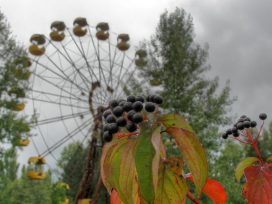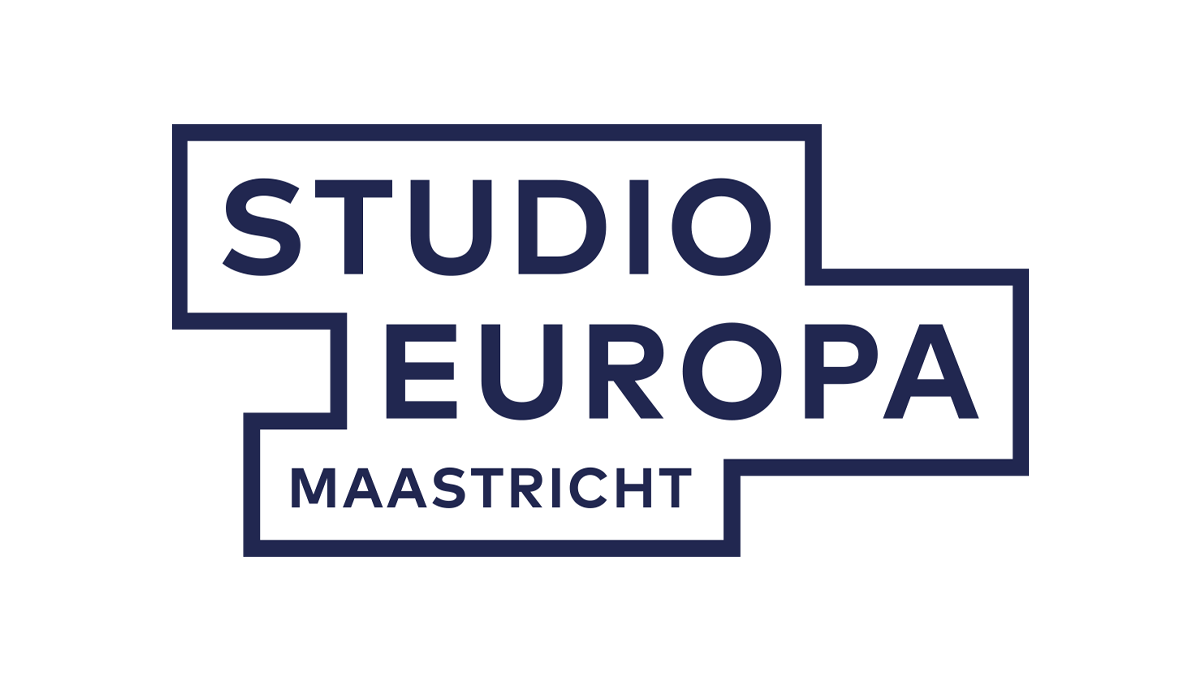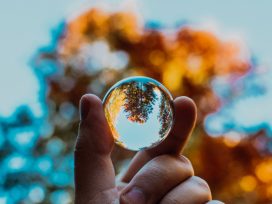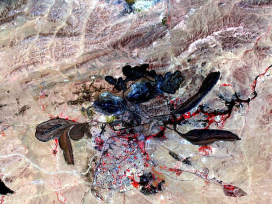In the aftermath of the Chernobyl accident, international agencies dismissed local doctors’ warnings about a ‘public health catastrophe’ in order to suppress scandal over nuclear tests carried out by the West since the 1950s. Kate Brown talks to Aro Velmet about the secret history of radiation and what Chernobyl means in the era of climate change.
Aro Velmet: Let me begin with an event that reminded me of your new book Manual for Survival: A Chernobyl Guide to the Future. A few months ago, an audit of Estonian food safety testing revealed how little we actually know about what we eat. The agency mostly inspected food produced in Estonia and focused disproportionally on organic produce. But by and large Estonians eat imported, non-organic foodstuffs. I thought to myself: this is where Manual for Survival would be handy. In the book, you show how important it is to realize that all nature today, especially our food, is infused with human activity; and how much it matters what kinds of tools you use to measure that activity. So how did you come to think of Chernobyl as this larger, planetary story?
Kate Brown: When you start thinking about food vectors in the context of the Chernobyl disaster – honey, tea, milk, wild mushrooms, game and fish – you realize that, as humans go out to the fields and the forests, take the stuff that’s valuable to them, and bring it back to their towns and their villages, the population points become aggregate vectors of contamination. Trucks bring in food with their dirty wheels, people take wood from the forests and put it in their kitchens and burn it, the ashes then go in their gardens. Everything gets focused on the village. No matter how hard people try to avoid it, no matter how vigorous the Soviet cleaning efforts were, radiation monitors found that radiation returned. The empire strikes back.
That’s what early American physicists realized when they first started messing around with radioactive man-made isotopes in their production facilities – this stuff gets everywhere. ‘As if it were alive!’ one physicist commented in the 1940s. This constant return of radiation from the surrounding environment is something we have never really been able to solve.
The stories you tell about radioactive food in Belarus and Ukraine would have seemed unextraordinary in 1986 and 1987. But today it’s 2019! Chernobyl was contained. That was the story. They built a big concrete sarcophagus around it, didn’t they?
The initial sarcophagus was there by November of 1986. My records show that levels of radioactivity started to cool down substantially in ’88 and ’89 with the decay of shorter-lived radioactive isotopes. But there are other isotopes. Strontium has a half-life of just under 30 years, cesium just over, so both will be around for the next 300 years or so. Only half of these isotopes remain after 30 years, that’s good. But, so far, it’s only been thirty years.
What you find, though, is that the isotopes that stay in the environment remain available in ways that were not expected after the accident. After Chernobyl, scientists predicted that contaminants would be buried so far underground that we wouldn’t be in contact with them after fifteen years. It turns out that with forest fires, for example, the contaminants return from their natural burial grounds to become ‘biologically available’ – meaning able to be taken up in the food chain. The greater the climate change, the more radiation returns to the environment. A lot of radiation is stored in glaciers, but the glaciers are melting, so this returns to our food chains again. Powerful floods have the same effect. There are all kinds of ways in which what we thought had been laid to rest is coming back.
This is not the story we usually hear about Chernobyl. We are told that this specific Soviet reactor was faulty, and that the specific Soviet bureaucracy was incompetent. We contained it – it’s done, story over. The reactor is sealed, the bureaucracy no longer exists, so it can’t happen again. How did we end up with this story, which ends in 1991?
I had that exact same question. When I looked in the archives, I saw that doctors and scientists closer to the accident, in Minsk and Kiev, raised alarm in the years following the accident about what they described as a ‘public health catastrophe’. That’s when the big storm of public protest emerged about Chernobyl in the USSR, in around 1990. To stave off public discontent, Moscow asked the big international organizations: ‘can you come in and check this out, because our people really don’t understand that this is not a problem’. So the WHO sent a delegation of three scientists, who spent about nine days traveling around to different places in the contaminated region, talking to people.
Then Moscow asked the IAEA. They sent a series of missions over eighteen months. These scientists looked at 1600 villagers and did some blood work on them. They left and said the same thing as the WHO: we see a lot of illness in those areas, but the doses are too low for them to be associated with Chernobyl contaminants. In the future there may be a few more kids with thyroid cancers, maybe a few hundred. That was their famous 1991 statement.
I’ve found different evidence. For example, Ukrainian scientists gave the IAEA medical team twenty biopsies of kids with thyroid cancers. Background levels for thyroid cancer in children was about one in a million, so the foreign experts did not believe there could be so much cancer in a small territory of northern Ukraine. A scientist brought the biopsies back to his lab, and they check out. So what did he do? He failed to include them in his report. The IAEA report says that there were ‘rumours’ of thyroid cancers, but that those were ‘anecdotal in nature’. What we see is a systematic editing out of research by the Ukrainian and Belarusian researchers, the ones who were closest to the ground.
My question is: why did they do this? Okay, the IAEA is a nuclear lobby, it was set up in the 1950s to promote the peaceful use of nuclear energy. But why would so many people go along with this? The US Department of Energy, the US National Cancer Institute took part. So did institutions in France and the United Kingdom.
Exactly this time, sequestered Cold War archives opened up about the production and testing of nuclear weapons. They opened in Russia, in the US, France, GB – all places where governments did atmospheric testing. At the same time, so-called ‘down-winders’ were going to court, attesting that they had been harmed by the detonation of over 500 bombs into the atmosphere releasing billions of curies of radioactivity. Those lawsuits totalled in the billions of dollars. So, if you could say, ‘oh look, the worst nuclear disaster in human history and only 54 people died’, then you could make all this go away. And that is exactly what happened.
The thyroid cancer epidemic that was reported in 1989 kept worsening. The evidence was so overwhelming that they couldn’t deny it, so it became the one accepted Chernobyl effect. Now, there are around 18,000 cases of thyroid cancer among people who were children at the time of the accident.
Were these local scientists credible? Maybe the WHO and IAEA commissions were right to dismiss them? Nuclear medicine is hard stuff. Radiation is hard to detect, it’s hard to quantify, it’s all very probabilistic.
Yes, it is. This is where the history of nuclear medicine really matters. And it is a chequered history. Nuclear medicine is born out of Hiroshima and Nagasaki. Five years after the bombings, in 1950, US and Japanese scientists founded the Atomic Bomb Casualties Commission (ABCC) to study bomb survivors. They wanted to know what doses people had been exposed to – how much radiation did they absorb. This data existed. A Japanese physicist collected it a month after the bombings, but the occupying US army had confiscated the data and never returned it. So the ABCC scientists went back to the survivors and asked: ‘where were you standing five years ago when the bomb went off? Where was your husband standing?’ They got a lot of information on the location, how far people were from ground zero. The doses were all based on humans’ fuzzy memory and mathematical extrapolations. Since US officials did not accept the fact of radioactive fallout, the dose was calculated as occurring in less than a second, as one big x-ray. That nuclear event, as constructed by ABCC scientists, could not have been more different from the long term, slow-drip of low exposures that the victims of Chernobyl were receiving. But that’s exactly what we’re talking about when we’re talking about Chernobyl – that’s fallout.
The ABCC scientists then followed these people and studied what had happened to them medically over the subsequent decades. They follow about 300,000 people for what, by the time of Chernobyl, had been almost forty years. That became the gold standard that is used until this day.
Soviet doctors did not have the luxury of knowing the doses from the Chernobyl accident; that was classified. They also had no access to the Hiroshima studies. But they had different ways of measuring. Since the beginning of the Cold War they had been encountering irradiated bodies in classified hospitals and had learned to detect damage – basically to use bodies as Geiger counters. Scientists could look at blood, changes in the nervous system, tooth enamel, and by cross-referencing these factors they come up with their own doses.
So they look at these and say, okay, if your blood looks like x, your enamel looks like y, then your dose is probably z?
Yes, and they look at this on an individual basis, which is great. Because you and I might live in the same household, but you might spend more time outside, or a lot of time by the river; you might like fish and I might hate fish, you might like blueberries, I might not – things like that. The western science method would probably give us both the same dose. They would give you a dose and from that calculate the probability of your getting cancer in the future, based on the Hiroshima studies. But the Soviet doctors would say, ‘hmm, it’s really weird that your dose is so much higher than Kate’s.’ You might be eating too much wild game, you might be spending too much time by the water with that radioactive shine coming off the river. That individual dose is more accurate than the simplifications used for environmental dose reconstructions.
What did they find?
They found that in about five different disease categories – autoimmune, digestive system, fertility, pregnancy problems, birth defects – there was an increasing frequency of disease. Children, older people and women were most vulnerable, and often would have not just one chronic health problem, but two or three at once. The doctors puzzled over this, they didn’t know what to make of it.
Another problem that comes out the history of toxicology and the Hiroshima studies is that what’s considered an effect of a toxin is usually only an ‘acute effect’ – i.e. death or cancer. What the Soviet doctors found is that maybe there were death and cancers down the road, but in the first five years people had subacute effects. For instance, ‘sick child disorder’ – where children had pneumonia nine months of the year. They would complain of having a chronic stomach-ache, they had enlarged thyroids, and the salivary glands were not producing enough saliva, so they were having all these oral hygiene problems. The westerners came in and said ‘you’re eating too much sugar and you’re not brushing your teeth’ – but they had never had these problems before. These are subacute problems that build up, and they make life miserable. They run through families, who then spend a lot of time and money in health clinics, while their earning power declines.
All of this was taken to be the ‘post-Soviet malaise’ – they’re poor, they’re struggling, they’re stressed out about politics, of course they’re unwell. Mortality rates declined in Russia after 1993. But life expectancy was actually on the rise in most places of the USSR in the eighties, partly because Gorbachev cut off the flow of alcohol. The lifespan rises – but not in the contaminated areas, where rates of sickness rise and life expectancy declines.
What complicates the story is that so much of the radioactivity comes in small doses, and as you say, that’s not really what the Hiroshima studies are about. Plus, only a small proportion of low-dose radiation comes from Chernobyl.
That’s what was really shocking to learn. Compare one radioactive isotope alone – radioactive iodine: short-lived, damaging to the human thyroid and other organs. Forty-five million curies from Chernobyl, 20 billion curies just from the Soviet and American nuclear tests in the 1960s. 20 billion – a whole order of magnitude greater. That fallout silently fell where the wind and the rain came together. Rainy coastal areas – Estonia might have been one of them. Northern Scotland and Wales got hit pretty hard. In the US, Minnesota, the Dakotas, Ohio. They found in the 1950s that levels of radioactivity were higher in Minnesota and Tennessee than at ground zero in Nevada. That’s because Nevada was a desert. When the bombs went off, radioactive fallout went up and came down to the north and east, where it first rained, in the humid Midwest. We really haven’t digested this fact. Soviet fallout also circulated around the northern hemisphere.
Right after Chernobyl, the head of UNSCEAR said that the opportunity should be taken to do a Hiroshima-sized study on survivors to figure out what happens when people are exposed to a chronic low dose that has saturated in the environment. One would have imagined that the Chernobyl Zone would have been crawling with researchers over the last thirty years, but that is not the case. We’ve yet to have that study done. In my book, I show the reasons why science did not occur. When politicians today say that we have no evidence that low-dose radiation causes health problems, what they mean is that we haven’t done the studies. We really don’t know. The small-scale studies that have been done in the Soviet and post-Soviet regions show that there really is cause for concern. But we don’t have the large study.
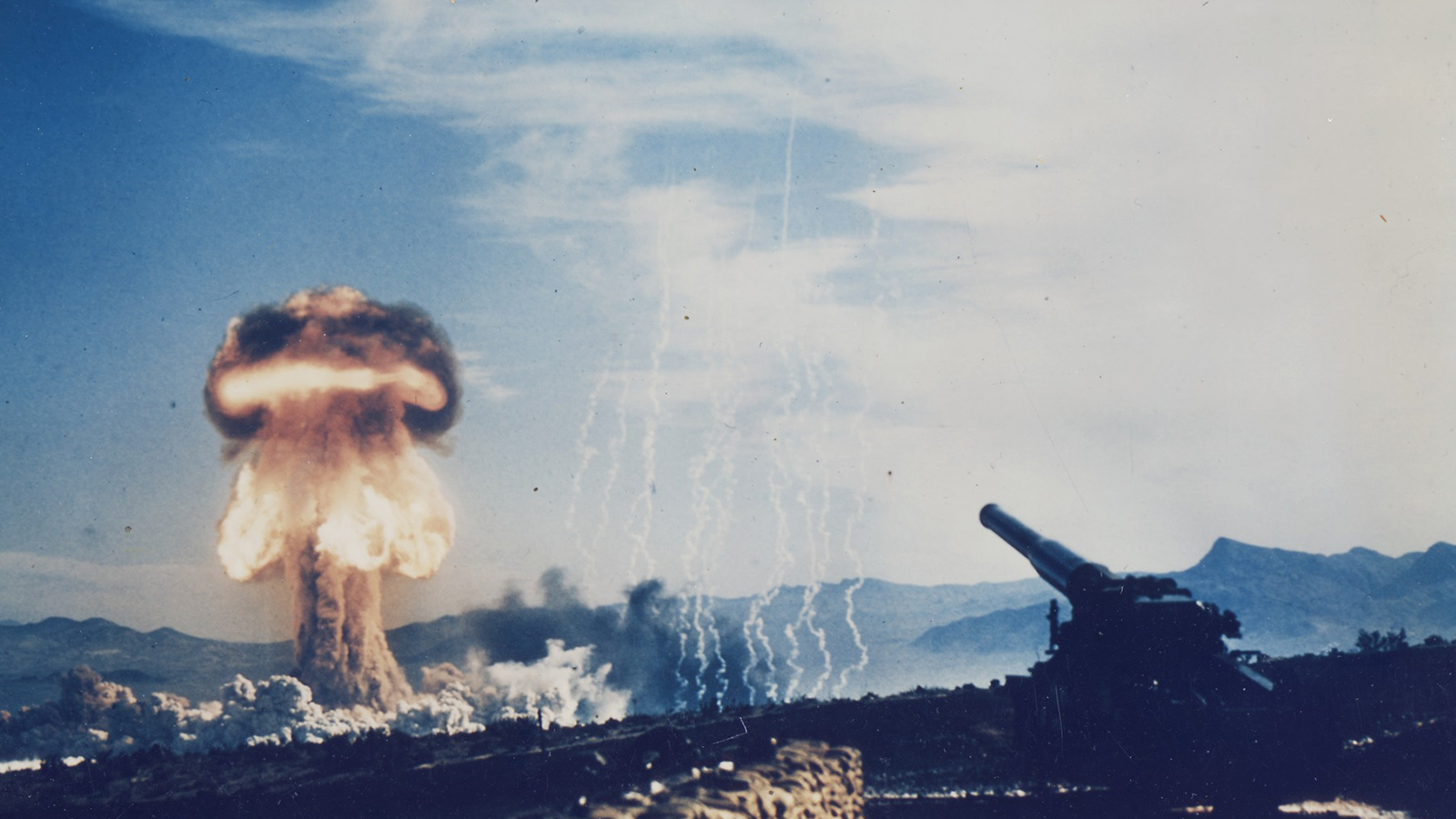
Frenchman’s Flat, Nevada – Atomic Cannon Test – History’s first atomic artillery shell fired from the Army’s new 280-mm artillery gun.
Source: Wikimedia Commons
This speaks to a larger problem of living in an age of ‘acceleration’, where increasing amounts of man-made toxins spread into our environment, without us knowing what they do to us. Not just radiation, but also herbicides, pesticides, neonicotinoid endocrine disruptors, some of which we know to be carcinogenic, others that we simply have no clue about. We barely know what these elements do on their own, and we certainly don’t know how they interact with each other, but they are now part of our environment.
If you look at national cancer statistics, especially in the northern hemisphere, they just go steadily up. Statistics should go in a wave, they should go up and down and up, if there’s just natural variance. Cancer rates rise steadily from the 1950s until the 1980s, when there’s a bit of a reprieve, except for thyroid cancers and children’s cancers. If you look at paediatric cancers registered in the 1930s, in the few countries where they were recorded, you find that there was almost nothing. Paediatric cancers are not usually missed.
It’s also contrary to the usual story, which explains rising cancer rates with longevity: cancer rates go up because people now live long enough to get cancer. Previously they would have died of tuberculosis or similar.
Exactly. That’s not the case when you see rising cancer rates in people of forty or younger, and particularly with kids. But I want to emphasize that these are correlations, they don’t prove causality between cancer rates and the increase in toxins in our environment since 1950. But maybe it’s time to finally do some studies. There are a lot of commercial forces and government forces that wouldn’t be happy about this, it would mean a big change. But I think we’re at that point anyway – where people think that we need a big change. Many of the chemical products are made from petroleum, so we may be fortunately phasing those out. Yet, I fear that we may be making a jump to nuclear reactors.
Estonia has one of the largest ecological footprints in the world, because it gets most of its power from oil shale – another consequence of Soviet megaprojects. This is quickly becoming unprofitable because of EU carbon pricing schemes. So, what’s the exit strategy? It seems to be assumed that the only option is nuclear energy. We’re not talking Chernobyl anymore, we’re talking fourth generation nuclear reactors. They are safer, the waste they generate only takes a few hundred years to decompose, instead of thousands, and we’re not the Soviet Union. On paper, this sounds pretty compelling.
When I started working on nuclear history, I was pretty agnostic about it. As someone who’s concerned about climate change, I would love for nuclear power to be solution. That would be great. Plug it in anywhere and light up a city. That is what modernist solutions are looking for.
That’s the argument against wind and solar power – that they’re not as reliable. What if it is overcast or a quiet day?
From the work of Mark Jacobson at Stanford, it seems like nuclear power is just not economically viable. In the US, over and over, the taxpayer has to bail out nuclear power companies. When the locality gets nuclear power, they pay higher rates for it. So far, even with the subsidies that are churned into nuclear power for research, design and construction, it doesn’t seem to be economically viable. They are certainly not cheaper than renewables.
But renewables give us something else that I think is really important. In a time when we have troubled democracies, nuclear power is not something that’s transparent. Normal people cannot get into nuclear power plants. When president Obama wanted to go to a nuclear power plant, his secret service had a conflict with the security detail of the power plant. It turned out that the power plant’s security trumped that of the president. Time and again, in the US, in the Soviet Union, in Japan, we see that our leaders have not been forthcoming about levels of radioactivity, about the extent of problems, about health monitoring.
What do renewables do for us? They distribute energy across the country. And that de facto means a more equal distribution of political power. Renewables don’t concentrate energy in the hands of one corporation, state-owned or otherwise. Renewables, I think, are opposed precisely because they would distribute power financially and politically. Renewables are good for individuals and for democracy; good for transparency. This is the big argument, on top of the health problems – which we haven’t properly resolved.
We are wonderfully creative people and we should not be talked into false choices. Either fossil fuels or nuclear – that is a false choice. Renewables are not one-solution fixes. They draw on our creative potential to come up with solutions based on local environments, local culture and habits, powered by the skills, ideas and innovation of millions of brilliant people. We don’t need to rely on experts and scientists. We can do these things now.
Published 16 September 2019
Original in English
First published by Postimees, 14 Sept. 2019 (Estonian version); Eurozine (English version)
Contributed by Vikerkaar © Kate Brown / Aro Velmet / Postimees
PDF/PRINTPublished in
In collaboration with
In focal points
Newsletter
Subscribe to know what’s worth thinking about.
Related Articles
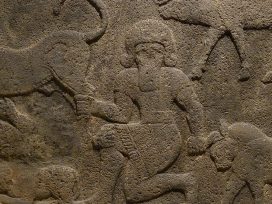
Literary expressions of grief across the ages use representations of nature as soothing metaphors. But rarely does the death of non-human life merit a thanatography. Could literature that finds a non-anthropomorphic means to grieve for other sentiment beings provide our desperately needed resensitization to the natural world?
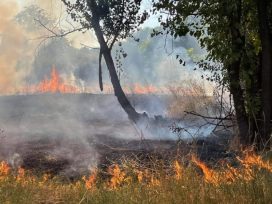
Property development pushed on green space in Bucharest has become comparable with the drugs market for profitability. Investigating the trail of questionable ownership rights since post-communist retrocession reveals acts of corruption and intimidation. Can parkland – a prerequisite for urban health and well-being, climate-change reduction and biodiversity – be saved from more illegal fires?
